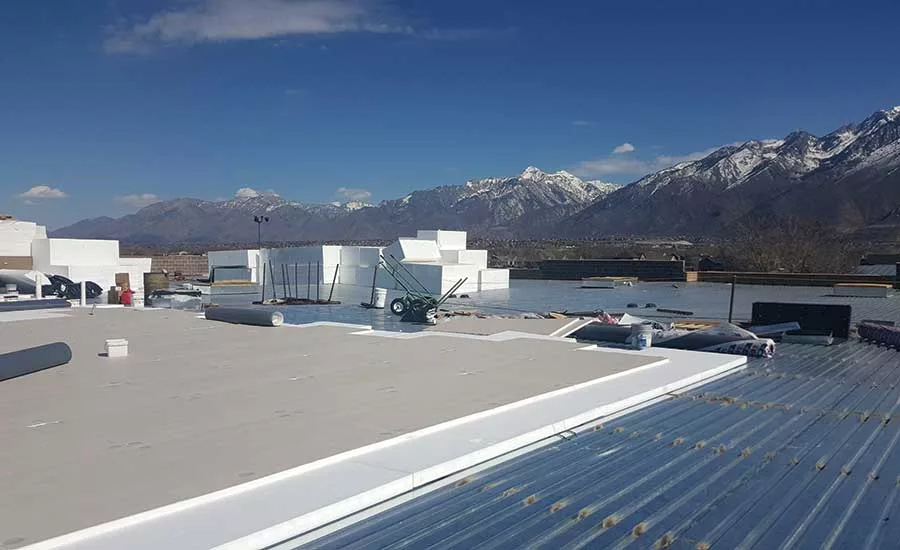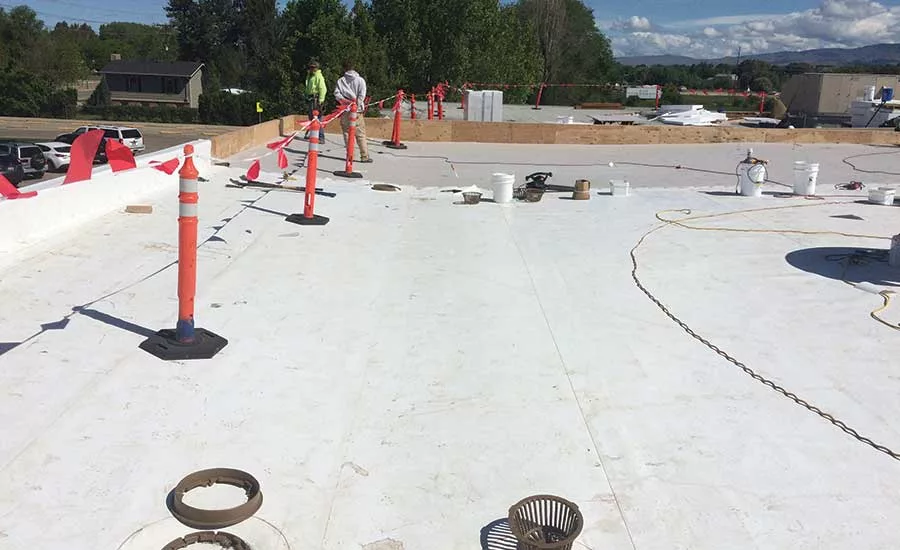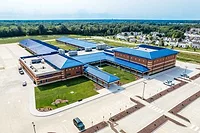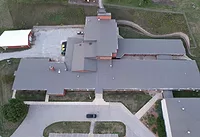Project Profile: Elementary School Reroof Project in Boise, Idaho
It Rains Every Night: Flexibility, Affordability, and Ease of Use Define Material Selection


In roofing, they say “It rains every night,” which means that no matter how much gets done on a reroof project, at the end of the day the entire roof must be completely watertight before the crew can leave. Shane VonWald knows a thing or two about reroofing, he’s been doing it for more than 27 years. Starting out as a second set of hands in his stepfather’s residential roofing business, he quickly rose through the construction laborer ranks from journeyman to foreman to superintendent before moving into project management and estimating for a large contractor. Today, VonWald leads the commercial roofing division at Signature Roofing, a specialty contractor serving the Boise, Idaho area since 2002. The firm’s roots, like VonWald’s, are in residential roofing. Determined to break into growing local markets in public works and large private projects, Signature Roofing brought VonWald into a new commercial division in 2013.
“Commercial roofs can be quite a bit more complicated than residential projects,” said VonWald. He estimates Signature Roofing does approximately 20 commercial roofs a year, ranging from public schools and municipal buildings to retail centers and office complexes. Signature Roofing’s residential division, on the other hand, does some 300 homes a year. “In residential, it’s a different house every day. You can be on the same commercial job for years and it has to be completely resealed every night.”
The differences don’t end there, as the variations in commercial roofs can be much greater in terms of materials, slopes, and the variety of mechanical and ventilation equipment on the roof that must be worked around. Each set of circumstances combines to present unique challenges to designers and builders when a roof reaches the end of its lifecycle and must be rehabilitated. Signature Roofing recently worked with Hutchinson Smith Architects (HSA) to reroof Maple Grove Elementary School for the Boise School District, addressing a set of challenges along the way.
“The Maple Grove Elementary reroof project is a great example of the way designers and builders have to work together to solve roofing challenges in the field,” shared Glenn Robinette, project manager with HSA. Maple Grove Elementary is a single-story brick building with a flat roof built in 1968. Due to rapid residential development in the area, the school had to be expanded before the originally designed building was even complete. A few years later, the school was expanded again, totaling 22 classrooms. Today, Maple Grove houses some 500 students, making it one of the largest schools in the Boise School District.
“The roof was a borderline failure when we got involved in 2015,” continued Robinette. “There was a lot of ponding and we needed to add a significant amount of slope to get it to drain properly. This can’t be done exclusively on the drafting table. It has to be defined in the field just about as much as on paper.” Creating a consistent, directionally-controlled roof slope to eliminate ponding also requires working around rooftop mechanical units, skylights, and other protrusions using a customizable material. HSA and Signature Roofing turned to ACH Foam Technologies’ Foam-Control® PLUS+® tapered roof insulation. Made from molded polystyrene, Foam-Control® PLUS+® is an architectural insulation product line with high compressive strengths, high R-values, and exceptional moisture resistance.
“The biggest determining factor in choosing the insulation type is what it’s being attached to,” said Robinette. “Using crickets, we get a tight fit around equipment with an affordable product that builders like to work with.” VonWald agreed, adding that when the crew starts to remove a commercial roof they never know what they will find. Filling in the gaps calls for a solid yet highly customizable insulation material. When the Maple Grove roof was peeled back it was clear that the ponding was due to a few low spots toward the center and the overall flatness of the roof.
“Using the tapered crickets, we built up the slope of the roof from the middle,” said VonWald, who oversaw the installation of some 250,000 board-feet of Foam-Control® PLUS+® 150 to get the roof to drain properly. “This was a compound slope situation. Several low spots forced us to add two feet of parapet wall, building up higher than we originally expected to get the slope we needed.” The Signature Roofing team used a hand-held hot wire cutter to shape the molded polystyrene insulation to fit around the mechanical equipment and roof drains, all of which also had to be raised up to account for the new roof height.
VonWald suggests that while architects may appreciate molded polystyrene for being somewhat less expensive than polyiso insulations, he appreciates molded polystyrene for being easier to install. “It is faster, with polyiso you have to build up layer after layer to get your roof-height. With Foam-Control® PLUS+®, a single piece is 12 inches deep and you can do it all in one shot.” Not having to build up layer after layer saves time and money, while also reducing material waste. On large commercial roofs with significant slope built-up of more than 3 or 4 inches, like the Maple Grove Elementary, the savings can be as much as 20 percent over polyiso products.
Molded polystyrene’s insulating properties compared to polyiso are not as immediately apparent at the purchase point. While ACH Foam Technologies’ Foam-Control® PLUS+®’s R-value per inch of thickness ranges from 4.2 to 4.5, comparable polyiso products represent a published LTTR R-value of 5.6 per inch of thickness. The blowing agents used in polyiso provide an initial high R-value. During the life of the material, air from the atmosphere diffuses into the cells and reduces the R-value. The blowing agents themselves also diffuse out of the material, further reducing the R-value. This is known as off-gassing.
In 2010, Mark Graham, the National Roofing Contractors Association (NRCA) associate executive director of technical services, confirmed that relying on long-term thermal resistance (LTTR) values may be misleading to designers. “Although the LTTR method of R-value determination and reporting may be appropriate for laboratory analysis, research comparison and procurement purposes, NRCA does not consider LTTR use to be appropriate for roof system design purposes when actual in-service R-value can be an important aspect of roof system performance.”
The NRCA recommends designers use in-service R-values of 5.0 per inch in heating conditions and 5.6 per inch in cooling conditions for polyiso. Molded polystyrene insulation, on the other hand, doesn’t suffer from off-gassing and therefore retains the originally published R-values over the entire life of the product, without change. Available in compressive strengths of 15, 25, 40 or 60 psi, with a warrantied R-value that maintains its effectiveness for 50 years, ACH Foam Technologies’ Foam-Control® PLUS+® roof insulation proves to be flexible in more ways than one.
Looking for a reprint of this article?
From high-res PDFs to custom plaques, order your copy today!








